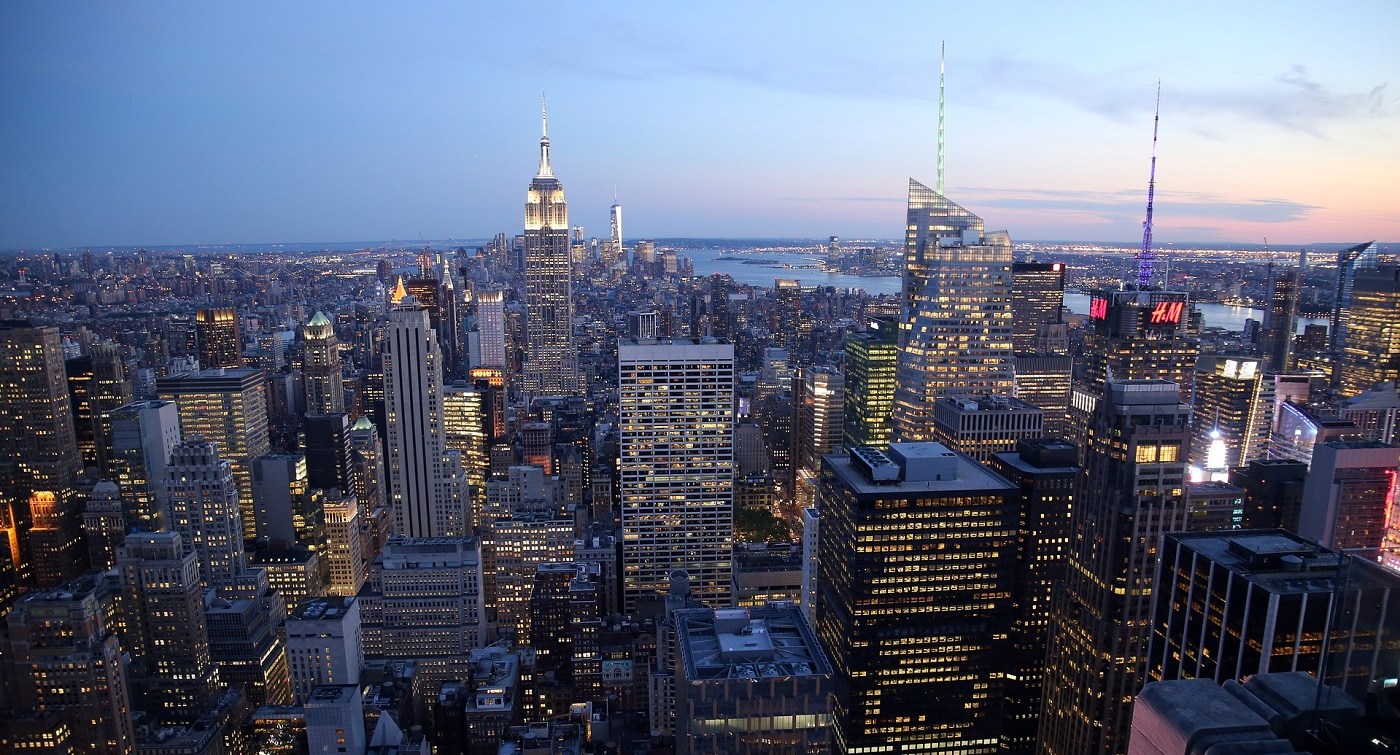There’s been much talk lately of record Asian capital being pumped into the U.S. commercial real estate market, especially in the past year. Foreign investors stole the spotlight in 2016, injecting billions in commercial assets, with a clear preference for the office and hospitality sectors. Anbang Insurance Group’s $5.5 billion buyout of Strategic Hotels & Resorts from Blackstone was all over the news in the past year, proving to be the largest commercial deal of 2016 and the second-largest Chinese investment in U.S. real estate.
An Asia Society Special Report released last year identified the most attractive U.S. markets for Chinese investors. We thought we’d track down Asian investment activity in each of these markets, focusing exclusively on major office deals. We enlisted the help of Yardi Matrix data to extract the top 20 largest office transactions from 2012 to 2016, in each of the 7 key markets identified by the report: New York City, Los Angeles, San Francisco, Chicago, Seattle, Boston and Miami. Then we checked which of these trophy assets were acquired by Asian-based investors.
After the first round of research, we excluded Boston and Miami from our analysis, as our data showed that Asian-led trophy office acquisitions in these markets were negligible. Only one Boston sale was closed by Asian buyers in the past five years, and no major Asian-led office investments were recorded in Miami between 2012 and 2016. The results shouldn’t surprise you—the most attractive office market for offshore buyers lies on the East Coast, and that market is the New York City office market. Turns out, Asian investors aren’t as keen on buying office properties as they are on developing new ones, the exception being the Big Apple, which promises stable, long-term returns.
New York City – Asian Investment Breaks New Records in 2016
- 12 deals totaling $11.8 billion
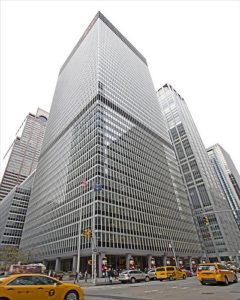
1285 Avenue of the Americas (Yardi Matrix)
The New York City office investment market remains the destination of choice for Asian investors: out of the top 20 largest office deals of 2016, 8 were closed by Asian-based buyers. Furthermore, 4 of these New York City office deals topped the $1 billion mark—not an easy feat, considering that the Chinese government is cracking down on outbound mergers and acquisitions. Nearly 69% of the top 20 largest deals were closed by Asian investors, either as single buyers or in partnership with U.S.-based companies. The largest one was RXR Realty and China Life’s $1.6 billion purchase of 1285 Avenue of the Americas. 2016 stood out from the crowd in terms of foreign investment—by comparison, Asian buyers made the top 20 office deals list just twice in 2013, once in 2014 and twice again in 2015.
Los Angeles – QIA Steals the Spotlight as the Only Asian Buyer of 2016
- 4 deals totaling $2 billion
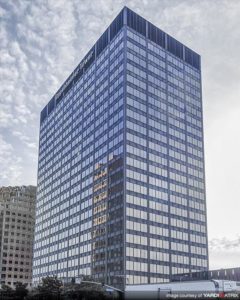
10880 Wilshire Blvd., Los Angeles (Yardi Matrix)
Though 2016 proved to be the busiest year of the past decade for the Los Angeles office sales market, Asian investors weren’t quite as present here. The only Asian buyer was the Qatar Investment Authority, which joined forces with Douglas Emmett to close 3 deals that landed in the top 20 list, totaling $1.7 billion. Though offshore companies are investing heavily in new office developments in the L.A. region, they’re not so keen on buying ready-made office assets. The only other Asian-led office transaction to make the top 20 list was in 2013, when Overseas Union Enterprise paid $368 million to acquire the U.S. Bank Tower at 633 W. 5th St.
San Francisco – Asian Buyers’ Favorite West Coast Office Market
- 10 deals totaling $3 billion
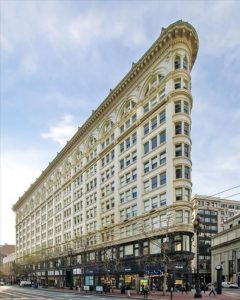
760 Market Street (Yardi Matrix)
The San Francisco office market also managed to attract a good deal of foreign capital in 2016, turning out to be the most fruitful year for Asian office buys since 2012, when the Government of Singapore made a $910 million splash on 101 California St. Four Asian-led office acquisitions made the top 20 in Fog City last year, totaling $949 million. It’s a sign that offshore investors are beginning to bet even bigger on the market: out of the yearly top 20 largest deals, Asian-led office acquisitions totaled $296 million in 2015, $350 million in 2014 and only $179 in 2013. The most notable transaction of 2016 was the $374 million sale of the Phelan Building at 760 Market St., to a member of the prominent Hotung family from Hong Kong.
Seattle – Emerald City Market Increasingly Appealing to Foreign Investors
- 5 deals totaling $1.67 billion
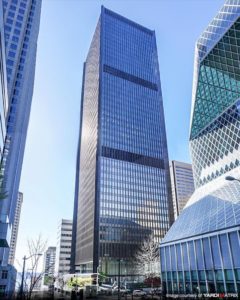
Safeco Plaza (Yardi Matrix)
When it comes to office property acquisitions, the Seattle office market was not a popular destination for Asian investors until 2015, when GAW Partners acquired Columbia Center (the tallest building in the state of Washington) for $711 million and Pacific Eagle Holdings paid $124 million for the Dexter Horton Building at 710 2nd Ave. Chinese President Xi Jinping’s 2015 visit to Seattle will likely result in a growing number of Chinese-led projects sprouting up in the region in the upcoming years.
The appeal of the Emerald City office market continued to grow in 2016, with 3 deals landing in the top 20 list: Ventas’ $387 million acquisition of Safeco Plaza at 1001 4th Ave., Mirae Asset Financial Group’s $247 million purchase of 325 9th Avenue North, and Gemini Rosemont’s $203 million buy of One Twelfth @ Twelfth, in a joint venture with Gemini Investments.
Chicago – No Major Asian Office Buys in 2016
- 8 deals totaling $1.7 billion
Compared to the other 4 markets on our list, which all recorded growth in terms of Asian investments in 2016, the Windy City doesn’t look like an attractive market for offshore office buyers. There were no Asian-led office property acquisitions to make the top 20 largest deals list in 2016, and 2015 saw a 61% year-over-year decrease in large office purchases made by Asian companies. The last major purchase closed in 2015, when Samsung SRA Asset Management paid $314 million for the Harris Bank Building and Harris Bank Addition II at 111 W. Monroe St. and 115 S. LaSalle St. That’s not to say offshore firms aren’t interested in what the Chicago commercial real estate market has to offer. Dalian Wanda Group is heading the development of the mixed-use Wanda Vista Tower at 375 E. Wacker Drive, which, upon completion, will become the city’s third-largest building and the largest-ever real estate investment by a Chinese company in Chicago. Overall Chinese investment in Illinois hit a new record in 2016, making it the third-largest recipient of China’s outbound investment, after California and New York.
Asian Investment Surged in 2016–Is the Trend Likely to Continue?
The results of our analysis emphasize the fact that New York City’s office market remains the main target for foreign investment in the U.S. As far as major office transactions go, 2016 proved to be the busiest year for Asian buyers, which unloaded nearly $11 billion on properties in New York City, San Francisco, Los Angeles, Chicago and Seattle (based on the top 20 largest office transactions in each city). And though 69% of these transactions closed in the Big Apple, some buyers preferred to head West and we saw major deals pop up in top-tier markets like Los Angeles and San Francisco, after a few years’ lull.
The overall notable factor is that, before 2016, Asian investment was moderately concentrated in strong established markets and there does not seem to have been an urge to seek new destinations for capital. Last year’s shopping spree may have been investors’ attempt to get as much in as possible before new restrictions kick in–the Chinese government is reportedly preparing to impose new rules to curb “irrational” outbound investment. According to Fortune, the government’s efforts seem to already be paying off, as non-financial outbound investment decreased by nearly 53% year-over-year in the first two months of 2017. Any transactions worth over $1 billion will be scrutinized closely and take even longer to complete, pushing investors to pursue a higher number of smaller deals. Consequently, there might not be as many $1+ billion Asian-led office deals in the years to come.
Methodology
- database: Yardi Matrix
- primary use type: Office
- we analyzed the top 20 largest yearly office transactions for each city, from 2012 to 2016
- all deals including at least one Asian-based buyer were taken into account as Asian investments

